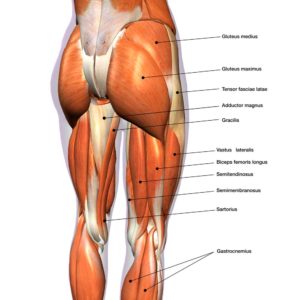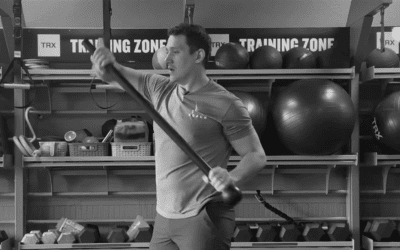Which Deadlift Variations Hit Your Goals?

We know deadlifts help make up the meat and potatoes of posterior chain training, but there are so many underutilized ways to pick something up from the ground. How do you know which variation to work on for maximum strength gains? Daniel Yalowitz has a background of 15+ years in martial arts and personal training. He interned at one of the best sports performance facilities in North Alabama working with athletes from middle school to collegiate. In this piece, he outlines different deadlift styles—conventional straight bar deadlift, trap bar, Romanian deadlifts, sumo style, and rack pulls—and why you might want to mix them into your training.

Deadlift variations: Mix Things Up With Some New Pulling Protocols
Let me paint a quick picture for you: the gym has eight platforms with a straight barbell at each one. There’s only one trap bar in the whole gym that mostly sits in the corner collecting dust.
Most athletes who walk in the gym doors never even think about trying different deadlift variations even though their back starts to ache after every set. They don’t consider elevating the bar or adding a deficit or changing their grip.
This prompts me to ask this question, “which deadlift variation are you married to and why?”
Are you a diehard straight bar deadlifter? Do you ever work with a trap bar? Maybe you don’t even deadlift because it’s “bad for your back.” Some of my clients never intend to touch a straight bar or a trap bar. I also have clients who alternate between deadstop deadlifts and top down deadlifts (RDLs).
There isn’t one perfect way to deadlift, but there might be a more ideal variation for your body based on different factors: your goals, equipment, and physical capabilities.


DOWNLOAD
trainheroic’s
free APP
Anatomy Refresher

The main muscle groups working in a standard deadlift are the glutes, hamstrings, hip flexors, quads, core, and lower/upper back. Clearly deadlifting is a foundational functional movement that requires serious muscle recruitment from most of your body.
You may feel more or less of each muscle group working depending on which style of deadlift you choose. For example, a deadstop deadlift (using a straight bar or trap bar) you will get more quad recruitment versus a top down deadlift (or RDL), in which you’ll use more hamstrings and glutes.
Conventional Deadlift Points of Performance
The points of performance are slightly different for each deadlift variation, but all of them follow some similar cues.
Setup
Make sure the bar is at the proper height for your capabilities. If you lack mobility in your hips and hamstrings, elevating the weight may alleviate some unnecessary back pain.
Hinge down to grip the barbell at around shoulder-width. Keep your weight over your midfoot and your shoulders over your knees. Head and neck in line with your neutral spine—eyes forward and slightly down in front of you.
Set your spine to neutral. Your spine has natural curves in it, but attempting to extend or flex your spine for a “straight back” could lead to poor form and injuries (or at the very least hold you back from getting the gainz).
Pull
Engage your lats, take a breath to brace, and use your legs to press into the ground as you stand up with the weight. Keep your arms long like cables attached to the bar. Lock your hips at the top of the lift, then hinge back down to reset the weight on the floor.
The Marketplace: Shop Expert Programming from Real Coaches
Sometimes all you need to reach your destination on your fitness journey is an expert guide. We’ve got you covered.
The TrainHeroic marketplace is the only place to purchase programming from the World’s best coaches, delivered through the immersive training experience of the TrainHeroic app.
Browse from thousands of programs for any goal and every type of athlete.
Or, join a monthly programming membership to connect with a real coach and community of athletes training just like you. Try any programming subscription free for 7 days.

Deadlift variations
Straight bar deadlift
This is the most popular deadlift variation and what we usually refer to as “conventional”—it’s also the version outlined in the points of performance above.
For straight bar deadlifts, the weight is held in front of you. Your shin is primarily vertical, which means that a lifter who lacks mobility or even taller lifters could potentially stress their low back. A simple fix to this may be to elevate the bar on a platform or stack of plates.
You’ll still get more quad recruitment than an RDL, but not as much quad recruitment as a trap bar deadlift. Another benefit to straight bar deadlifts is that there are several different grips you can try (mixed grip, hook grip). This lift is also easily substituted with other weights like kettlebells or dumbbells.
Trap bar or hex bar deadlift
I may be a little biased here since the trap bar deadlift is my jam (and for good reason). Trap bar deadlifts are another deadstop variation you can elevate if needed—a plate under each side should help with most mobility issues.
The main difference between this lift and the straight bar deadlift is that since the weight is distributed differently it makes the lift a little more “squatty” which is simpler for beginners. This version can also be substituted with KBs or DBs.
Romanian deadlift or rdl
People looking for pure backside lifts, here you go. The barbell RDL is a top-down deadlift meaning once you pick up the bar, it doesn’t touch the ground again until the set is finished.
Instead of setting the weight back on the ground every rep, you lower the weight (imagine shaving your legs with the bar) hinging at the hips until you feel the hamstrings and glutes. For a lot of athletes, the bar comes to just below the knees.
This variation is considered a pure hinge because there is very little knee bend and the shin stays vertical.
Coach’s Tip: Don’t sleep on the single leg version of these for extra glute recruitment!
sumo deadlift
Sumo deadlifts are another popular variation for people with spine injuries or back pain, since the wide stance allows for a “squattier” pull from the floor. The sumo style also lends itself well to using kettlebells and progressing to more complex movements like sumo deadlift high pulls.
Check out TrainHeroic’s full guide on sumo deadlifts here.
Hip-injured folks take note: this might not be the deadlift version for you. If you have trouble maintaining load under external rotation of your hips, go easy on the sumos.
barbell rack pull
I personally consider this halfway between a straight bar deadlift and an RDL. It’s still deadstop, but you can put your focus primarily on lowering the weight like an RDL, emphasizing your hamstrings and glutes.
Set the safety bars of the rack so that the bar rests just below your knees. As you pull, keep the bar on your body and drive into the floor with your feet through the movement. You should feel your traps and mid-upper back working. Rack pulls can be loaded heavy—think 1RM deadlift for sets of 5.

Programming deadlift variations
I like to start general fitness clients with a KB or DB deadlift on one day and a top down (RDL) on another day. Once the athlete can own the proper positions and handle a little more weight, they graduate to trap bar or straight bar (depending on their needs).
Give yourself time and experience with each deadlift movement to own their individual positions. This way you can hit your entire posterior chain from different angles and evolve into a more well-rounded athlete.
Related articles
3 Ways to Improve Mobility Without Stretching
Are you still trying the endless foam rolling and stretching exercises to get that deep squat position? We know how important mobility is for great, or even GOOD performance. All professional athletes have some comfortability in end ranges of motion. So, what else do...
The Ultimate Guide to Lunges: Queen of all Glute Exercises
Your glutes are the largest muscle group in your body. They’re responsible for almost everything your legs do—walking, running, jumping, squatting, lunging, and just standing upright. As far as moving through space goes, strong glutes are the bedrock of overall...
A Beginner’s Guide to Steel Mace Training
Author: Jesse Grund
Mace training will make you a better mover without it’s not confining you to a fixed space or predetermined range of motion. Second, it’s an offset load with 80 to 90 percent of the weight in the head. You’re also constantly having to resist rotation, which creates greater core engagement.

Join the community
Sign up for the latest training news and updates from TrainHeroic

About TrainHeroic
Support
Made with love, sweat, protein isolate and hard work in Denver, CO
© 2021 TrainHeroic, Inc. All rights reserved.





